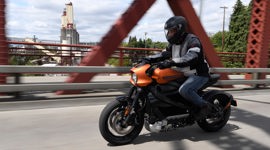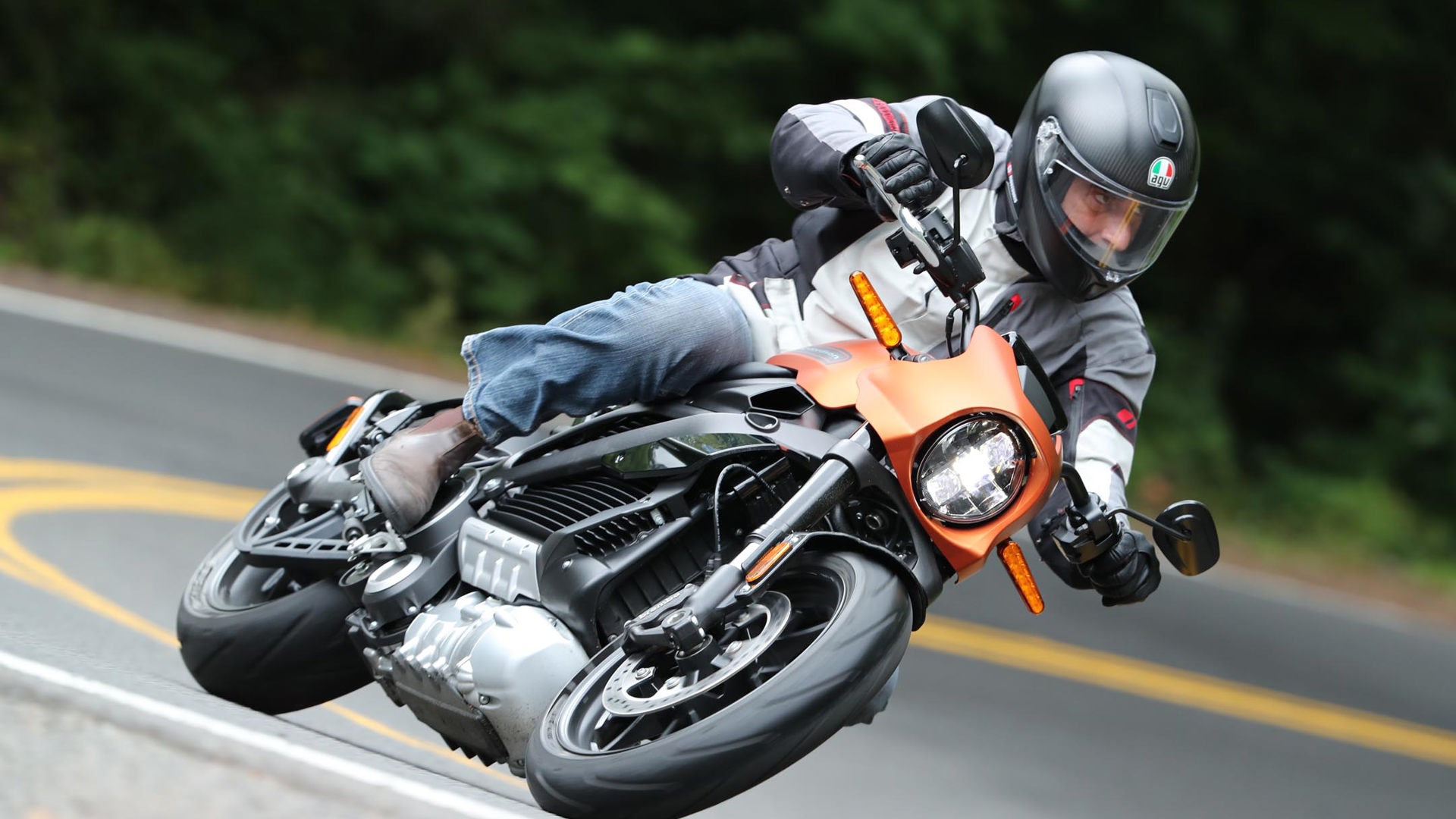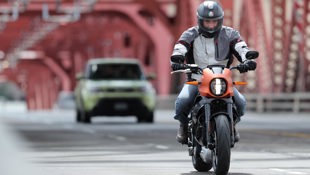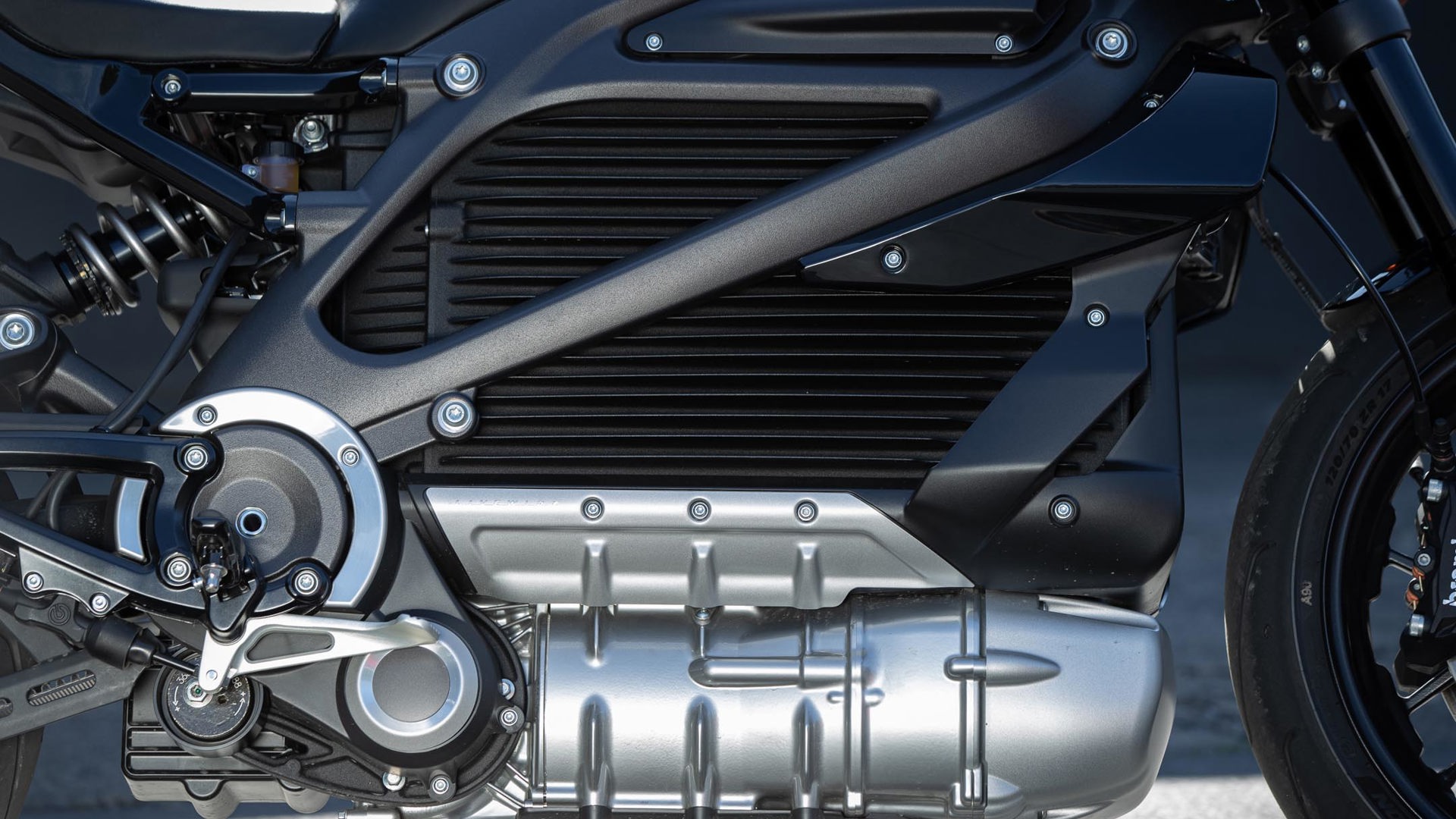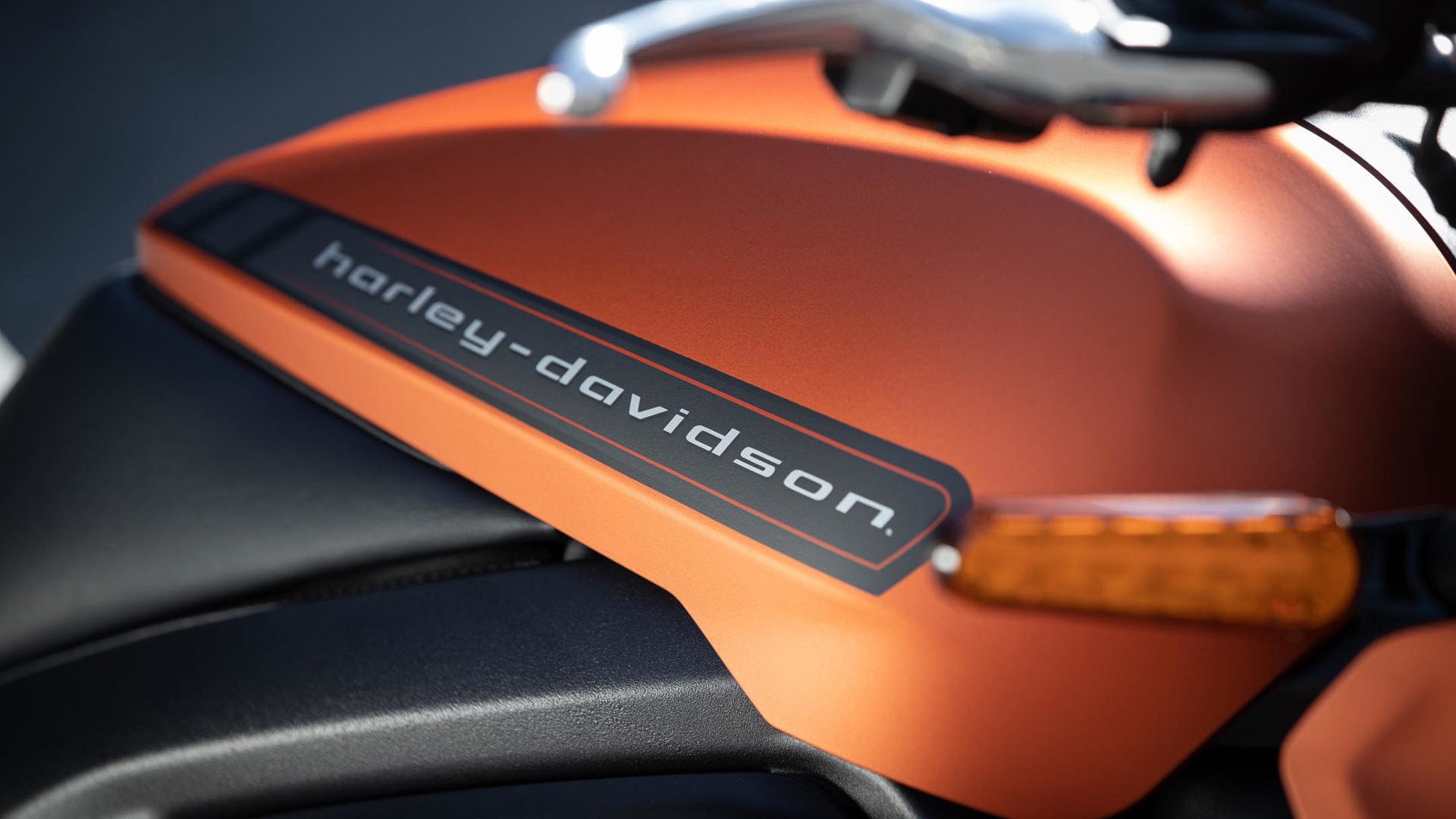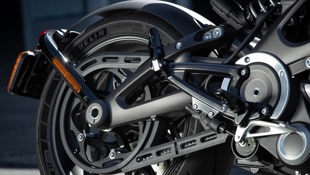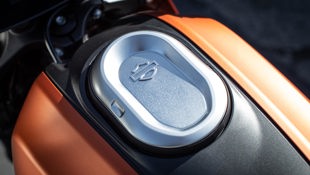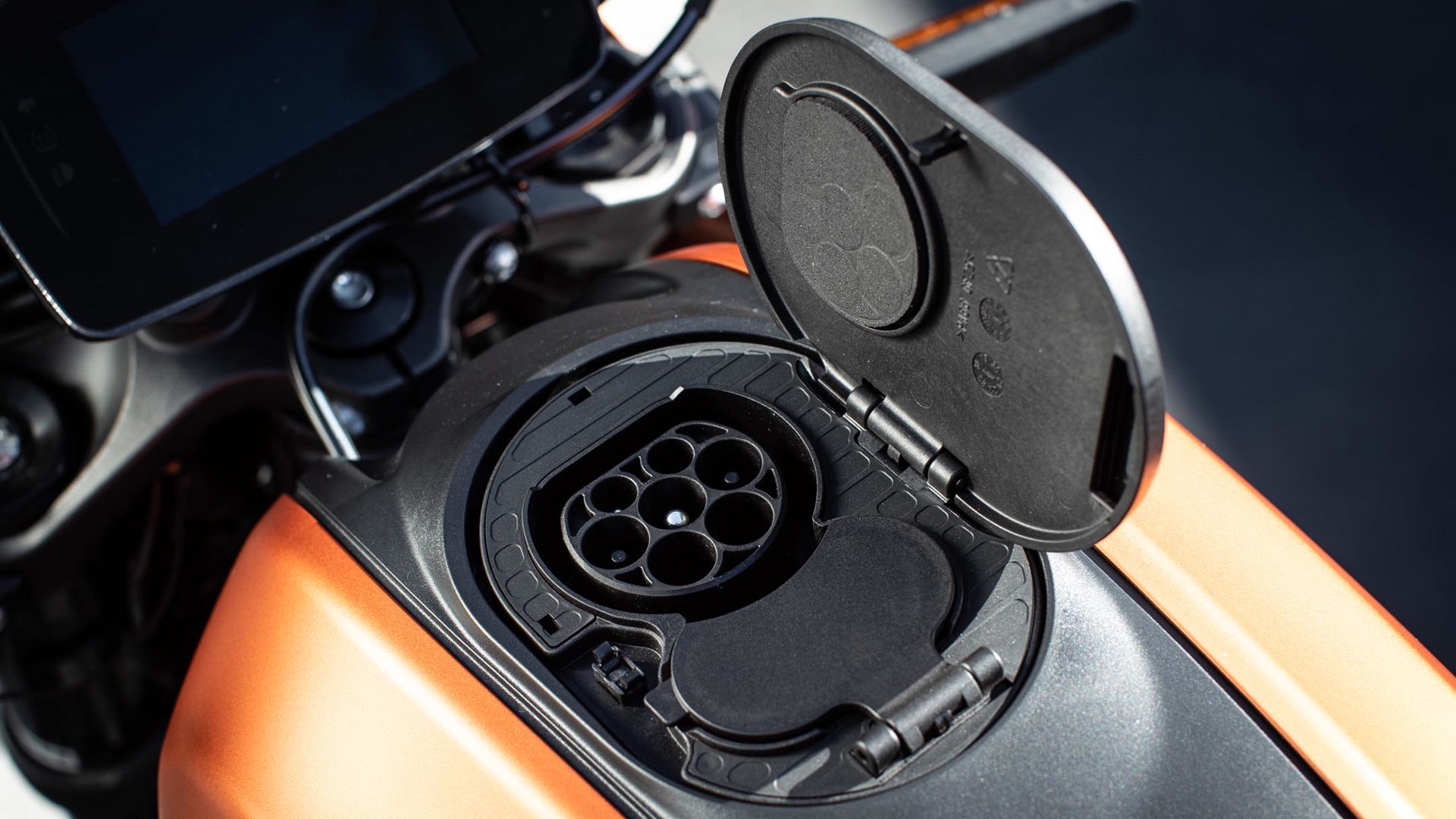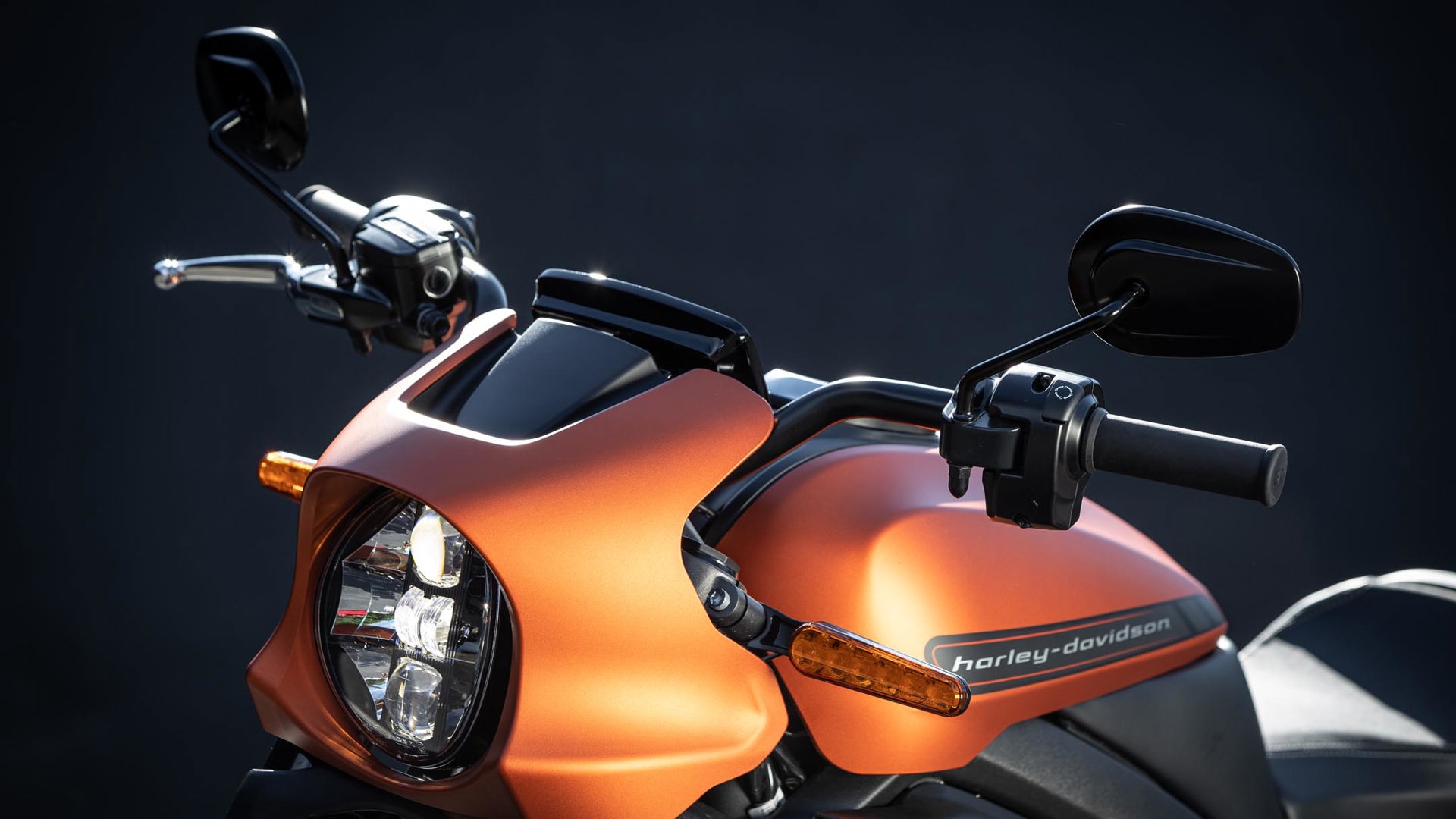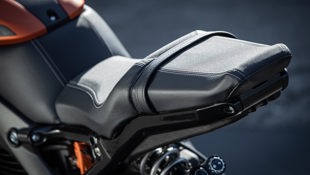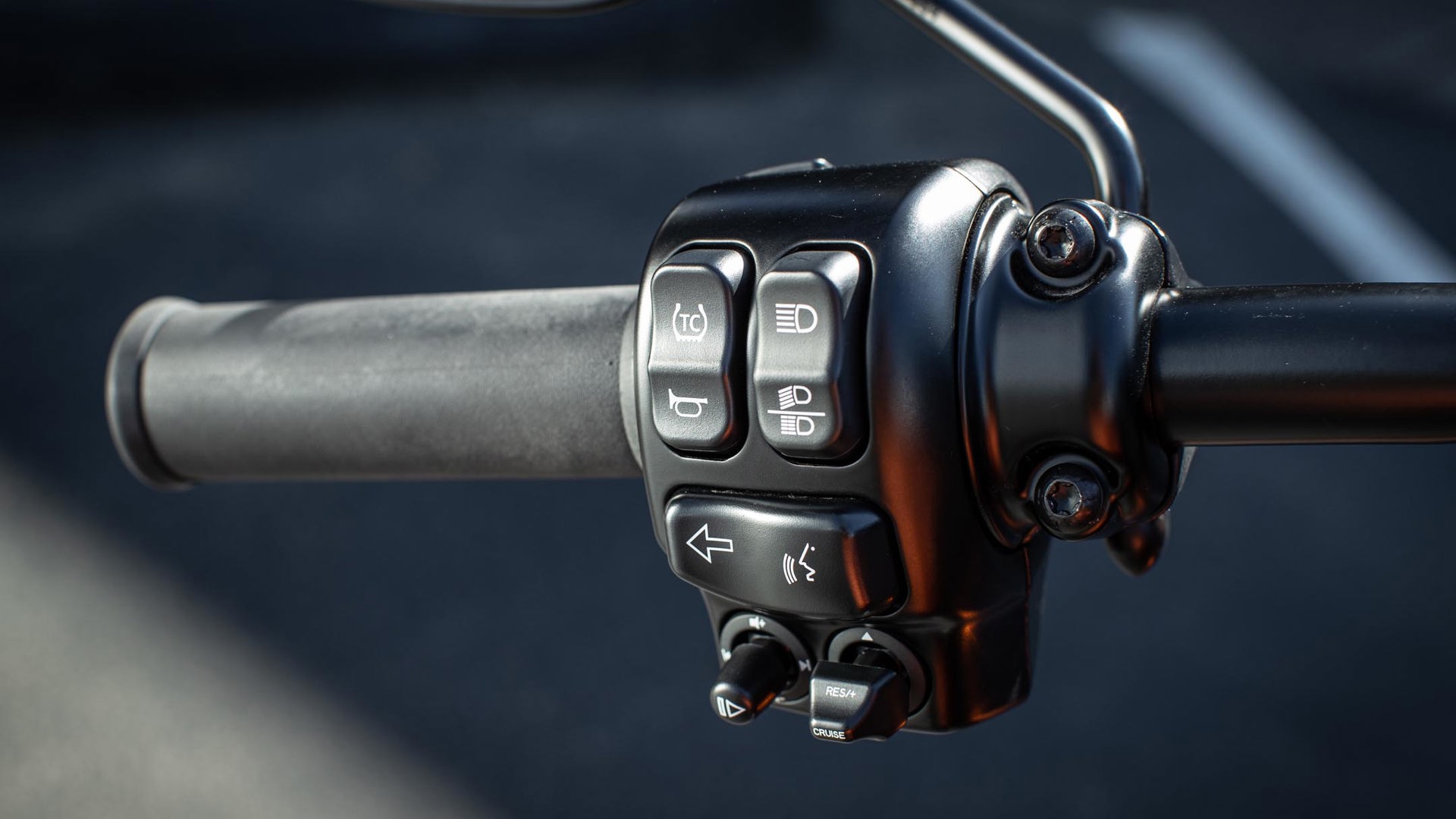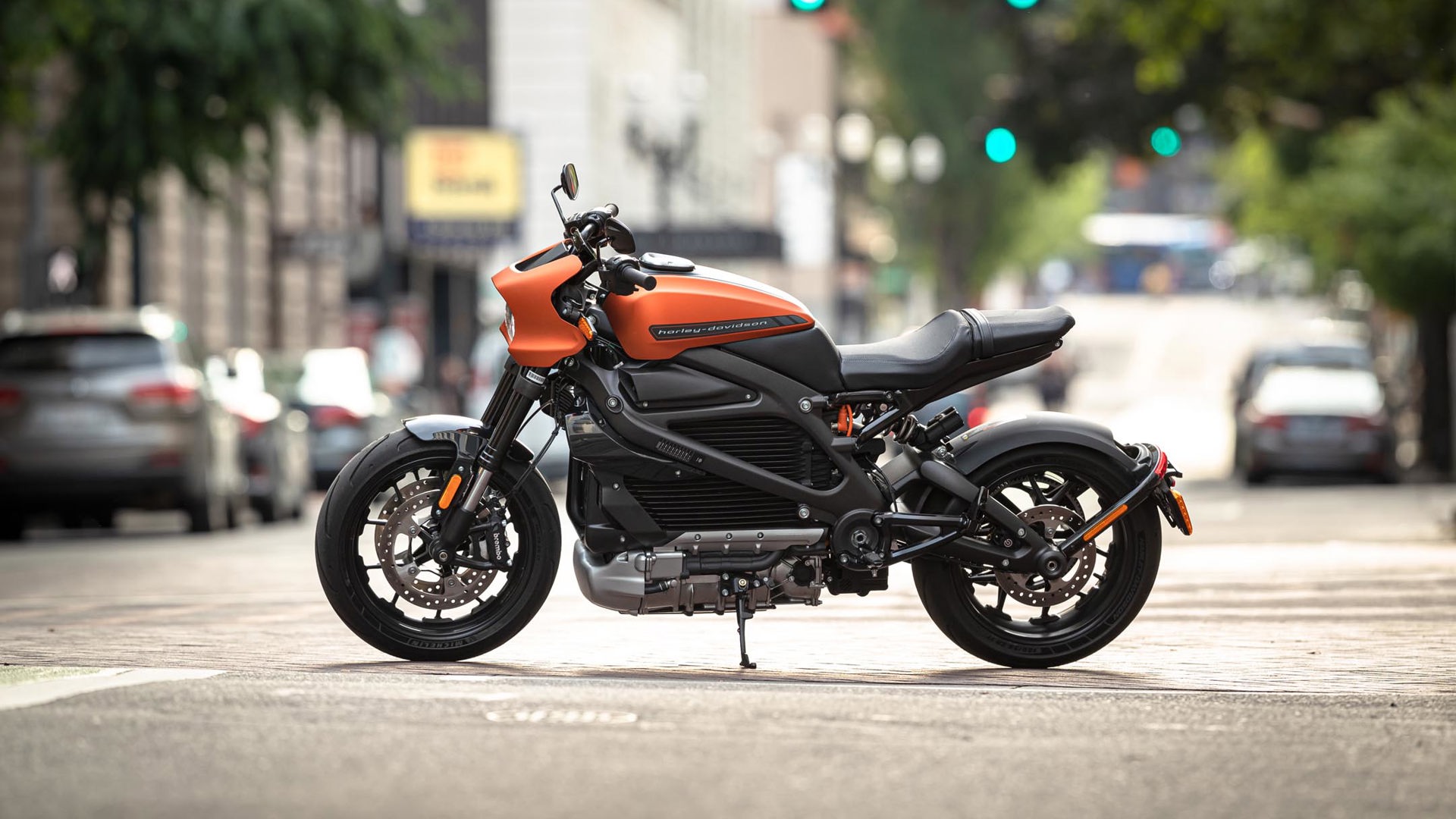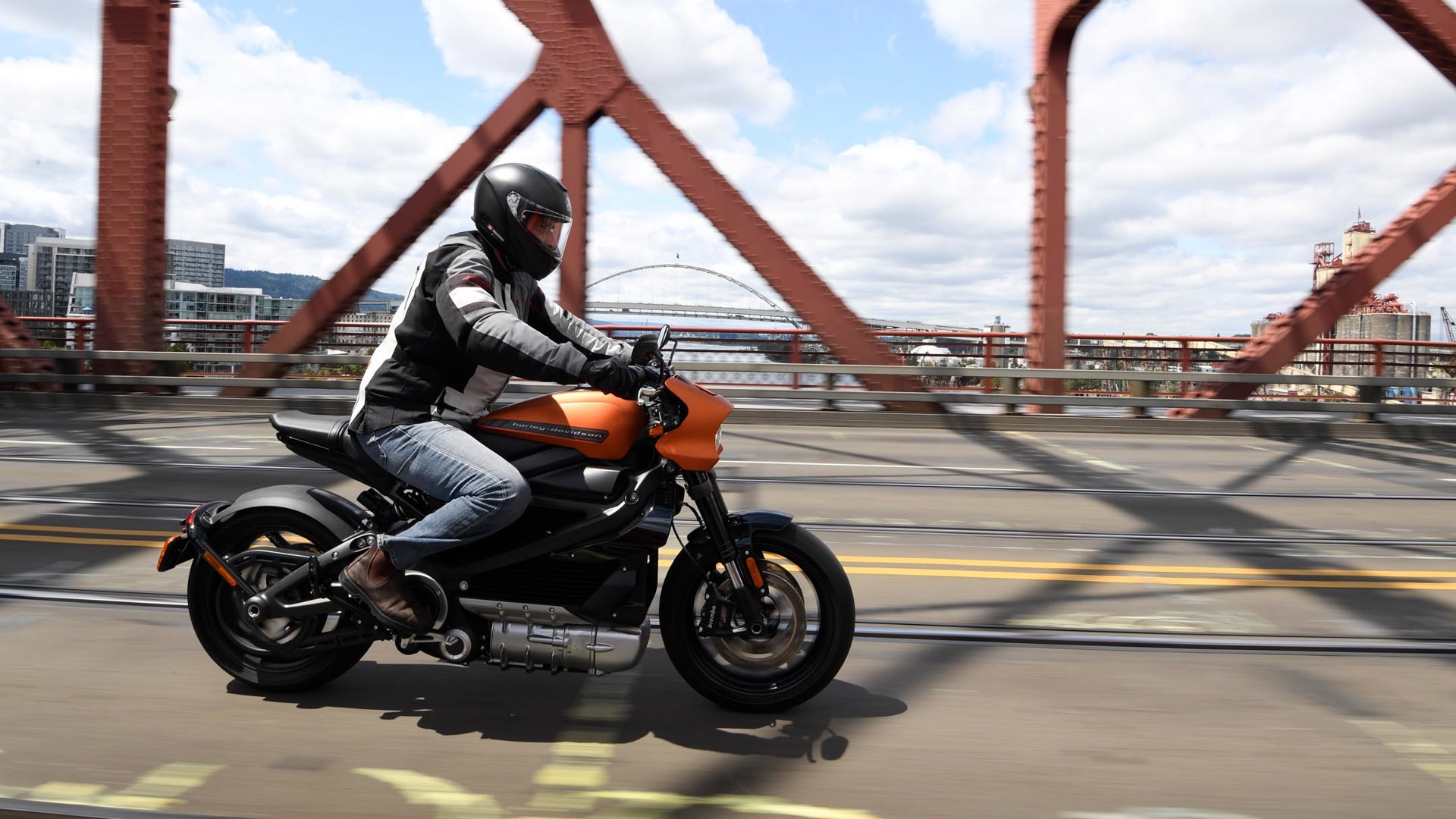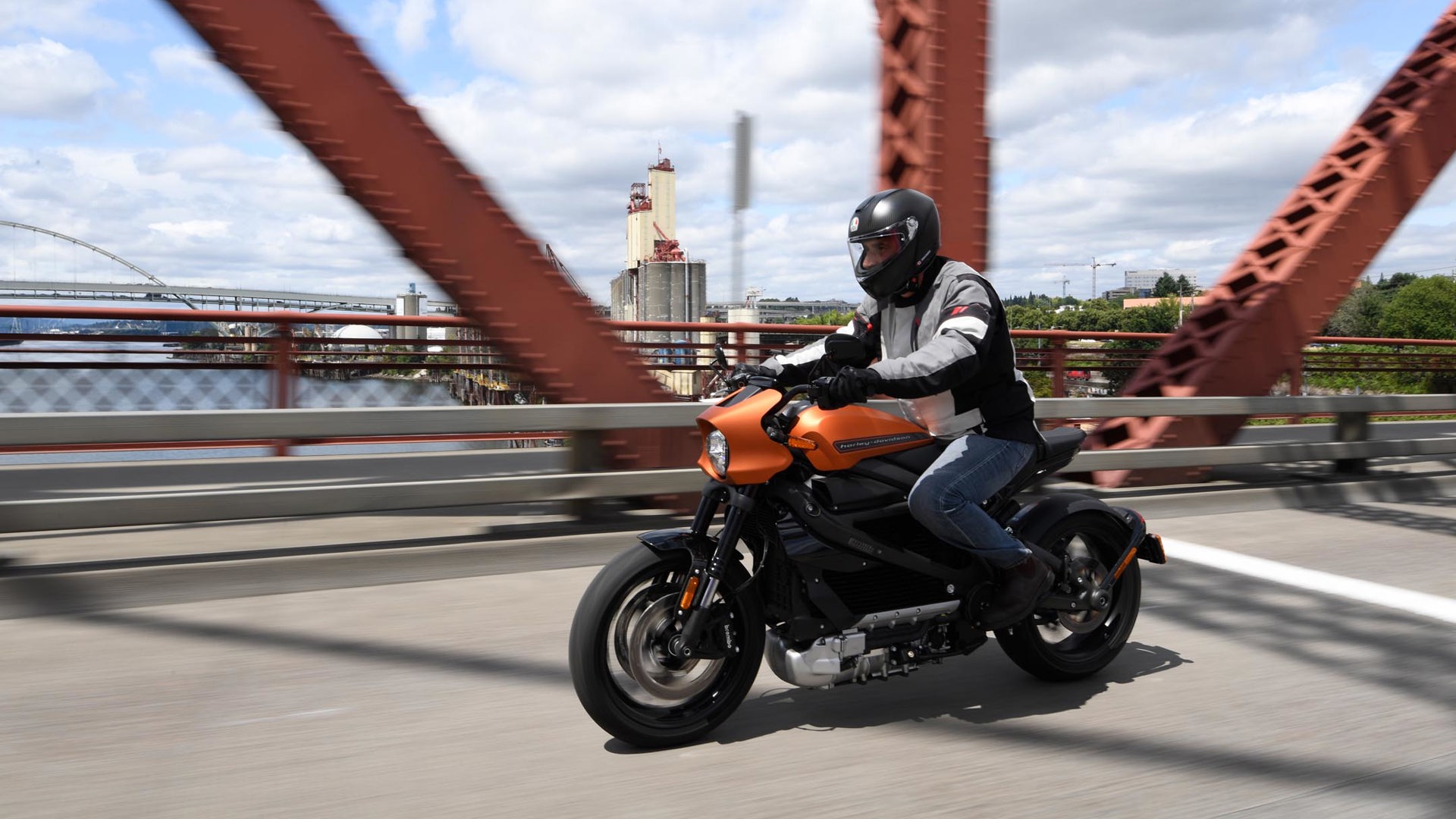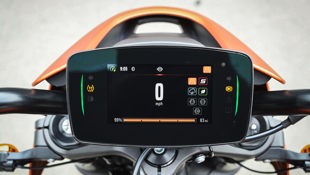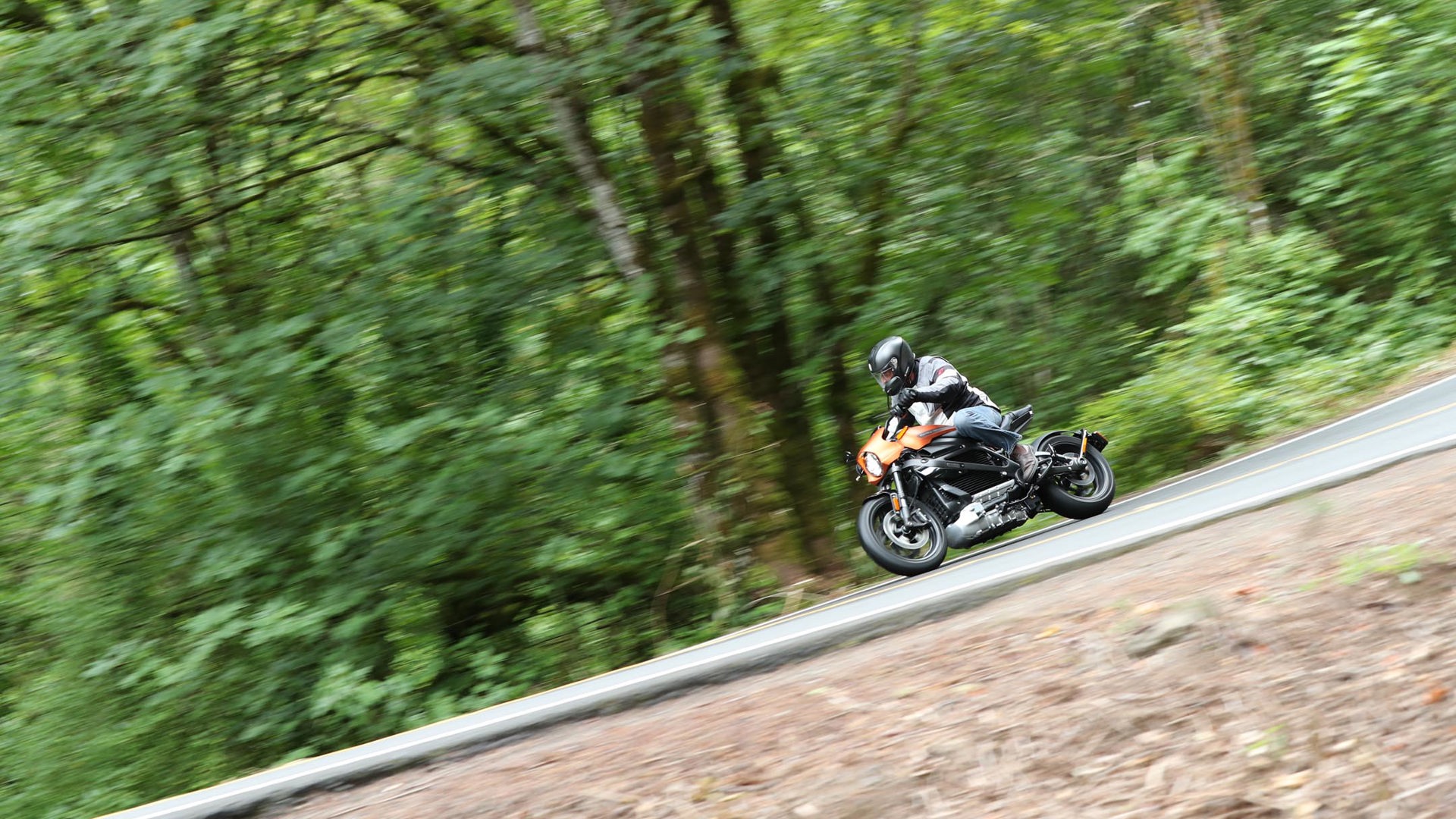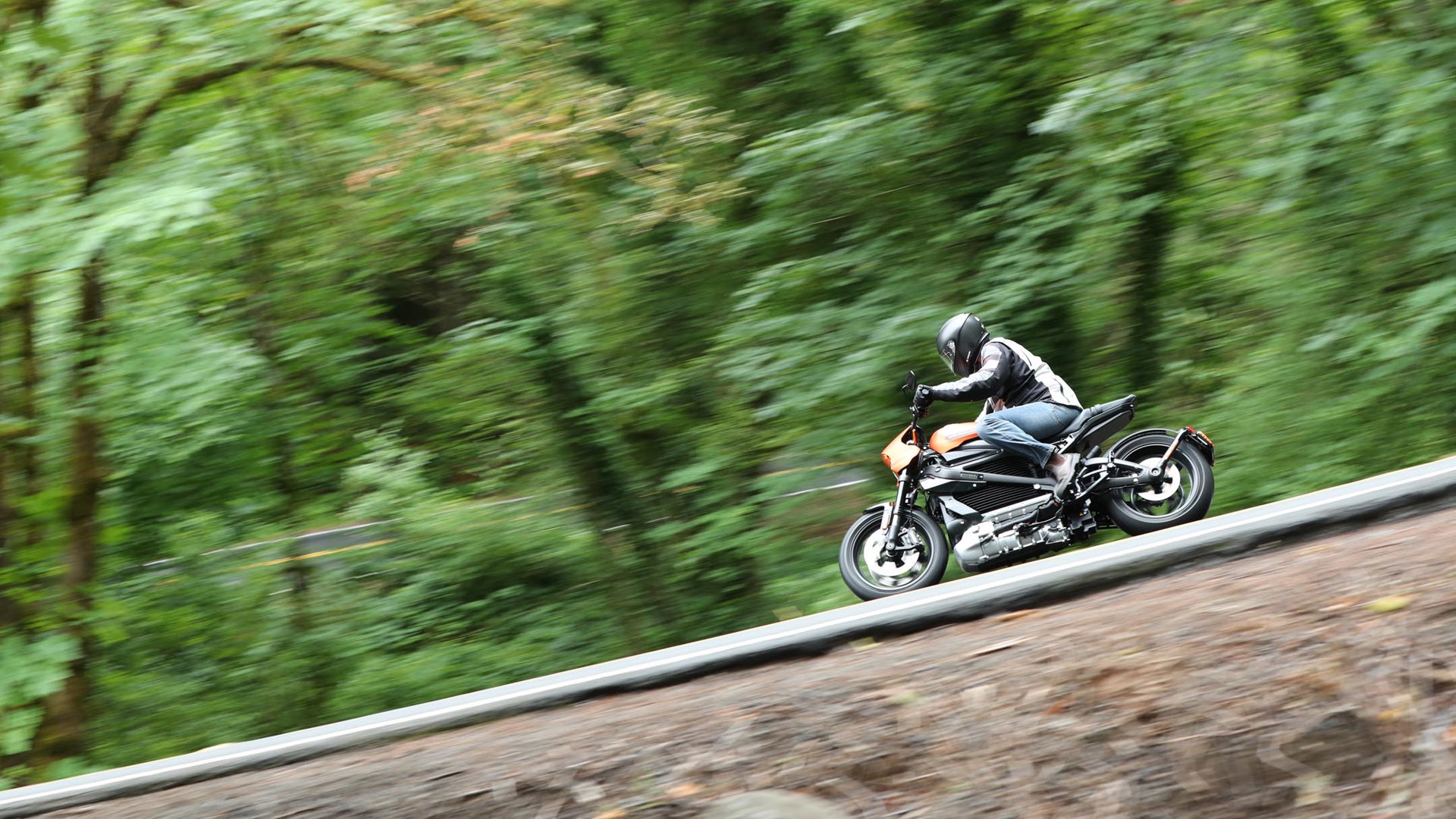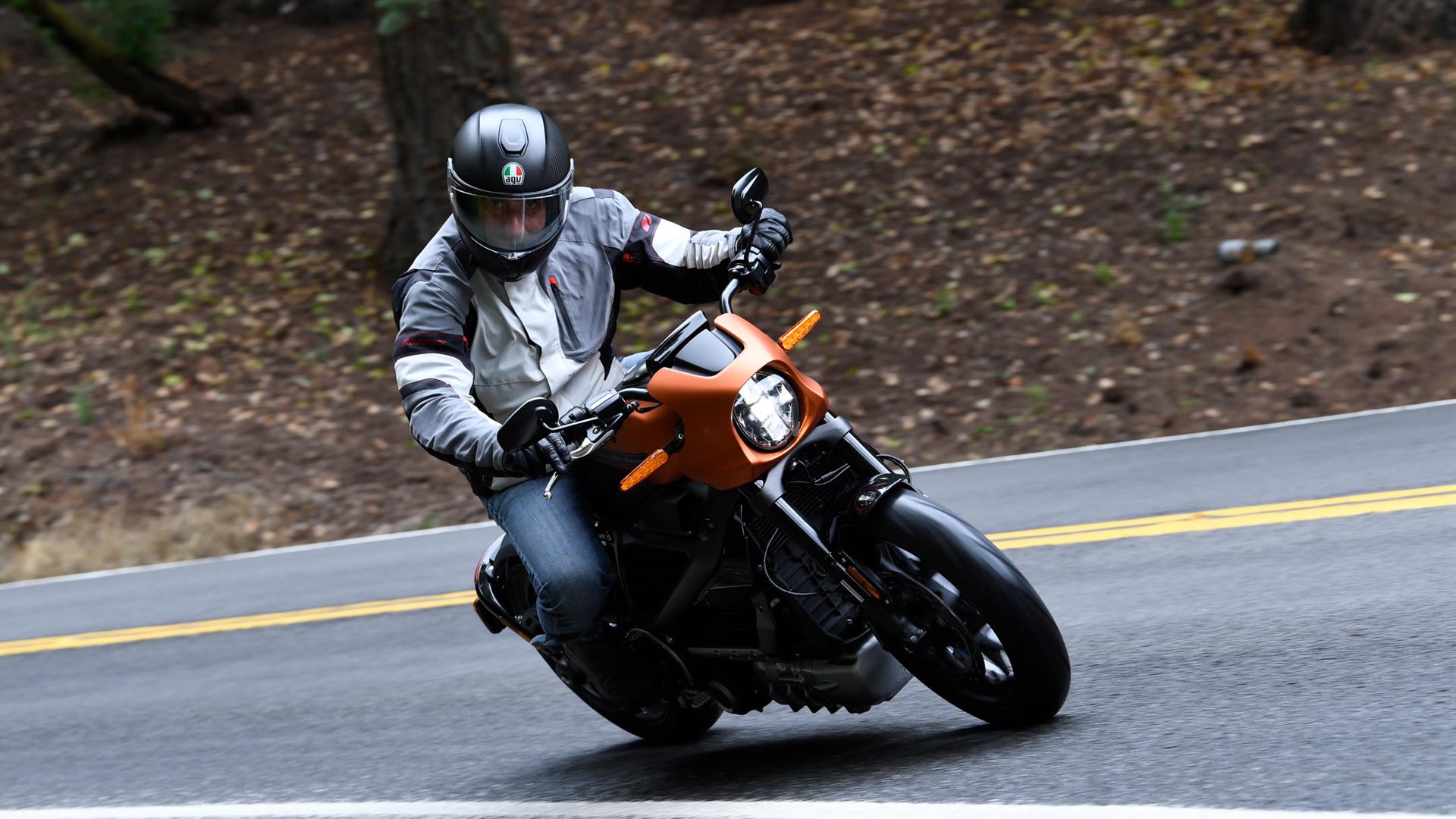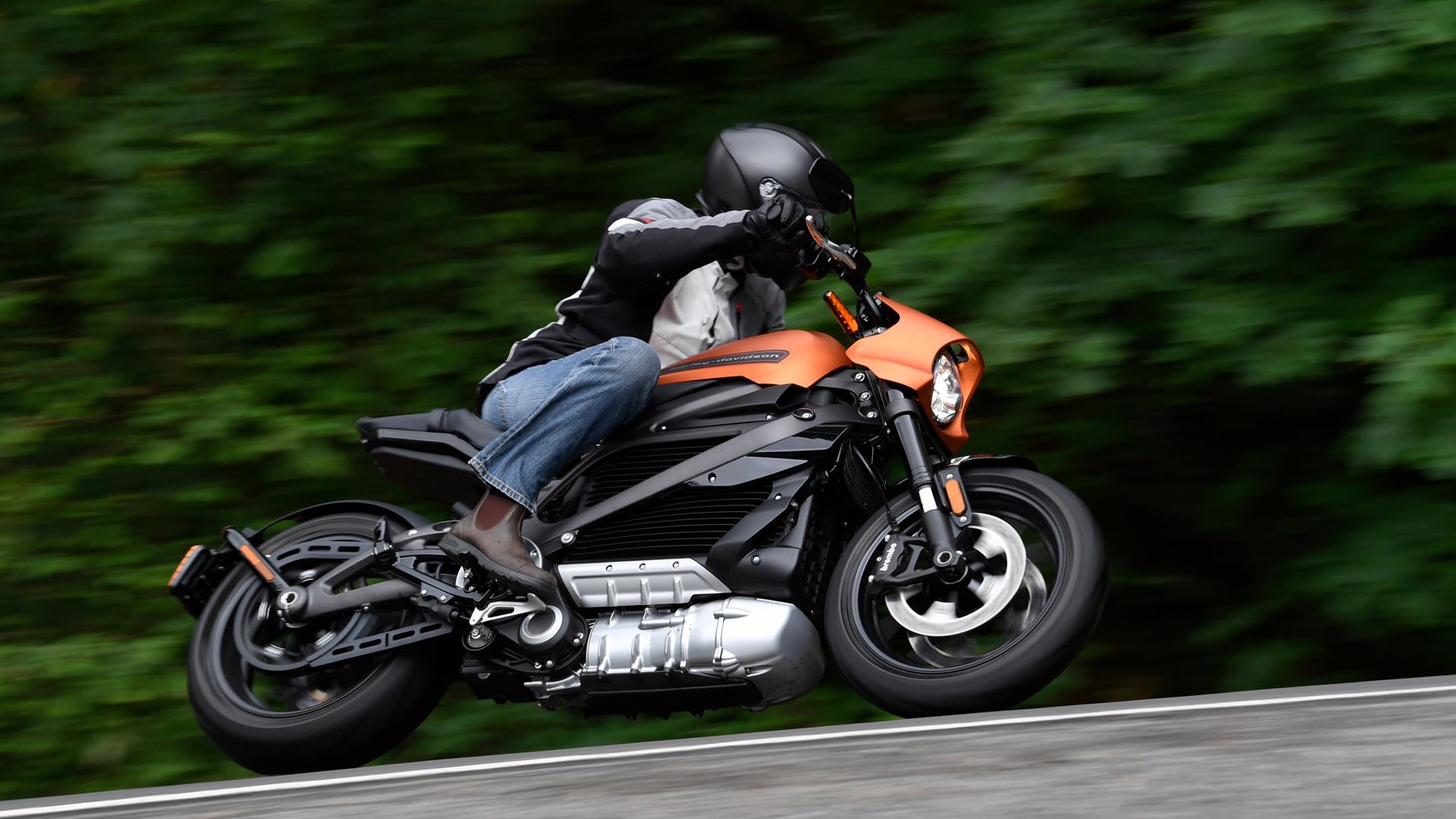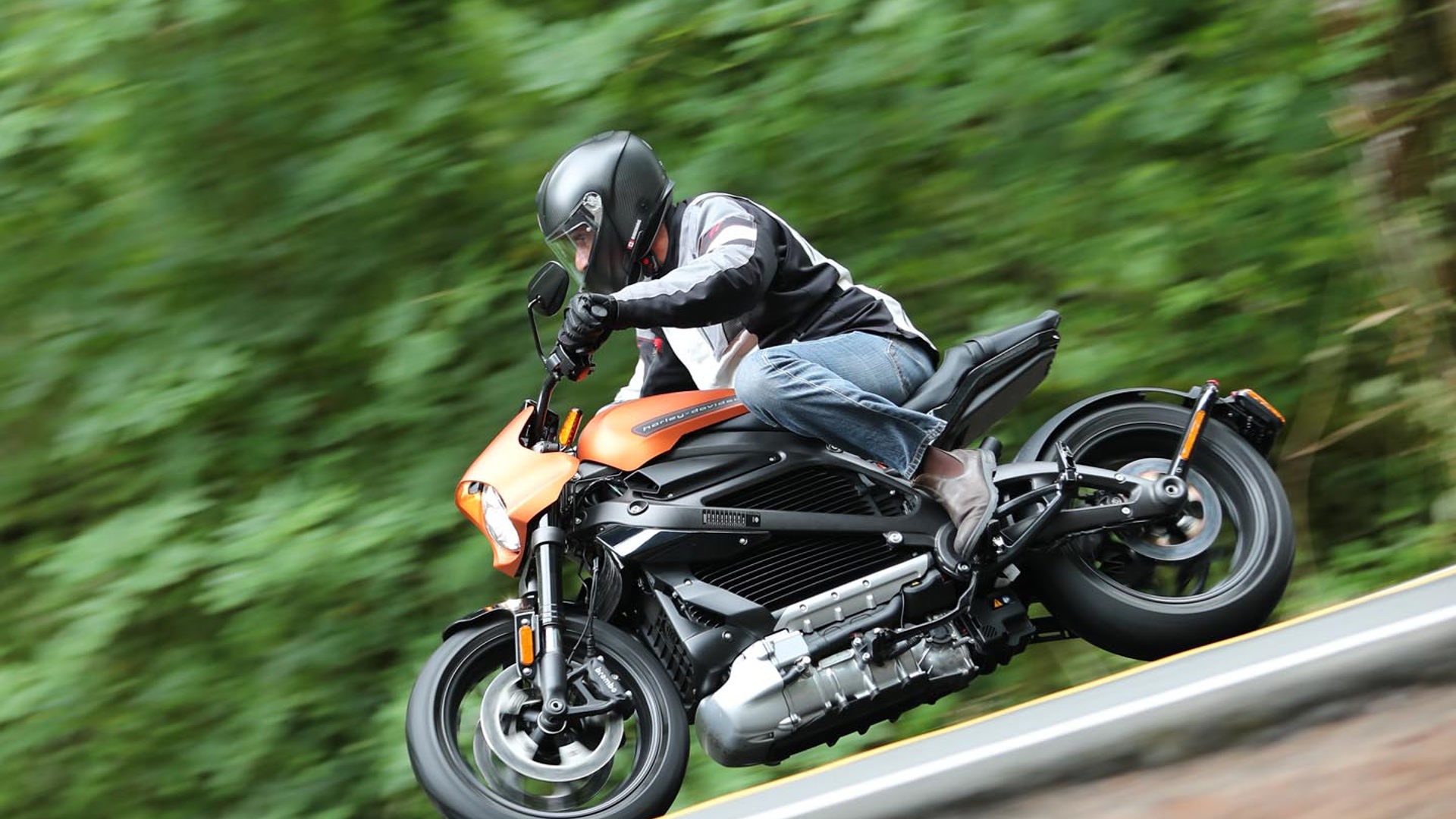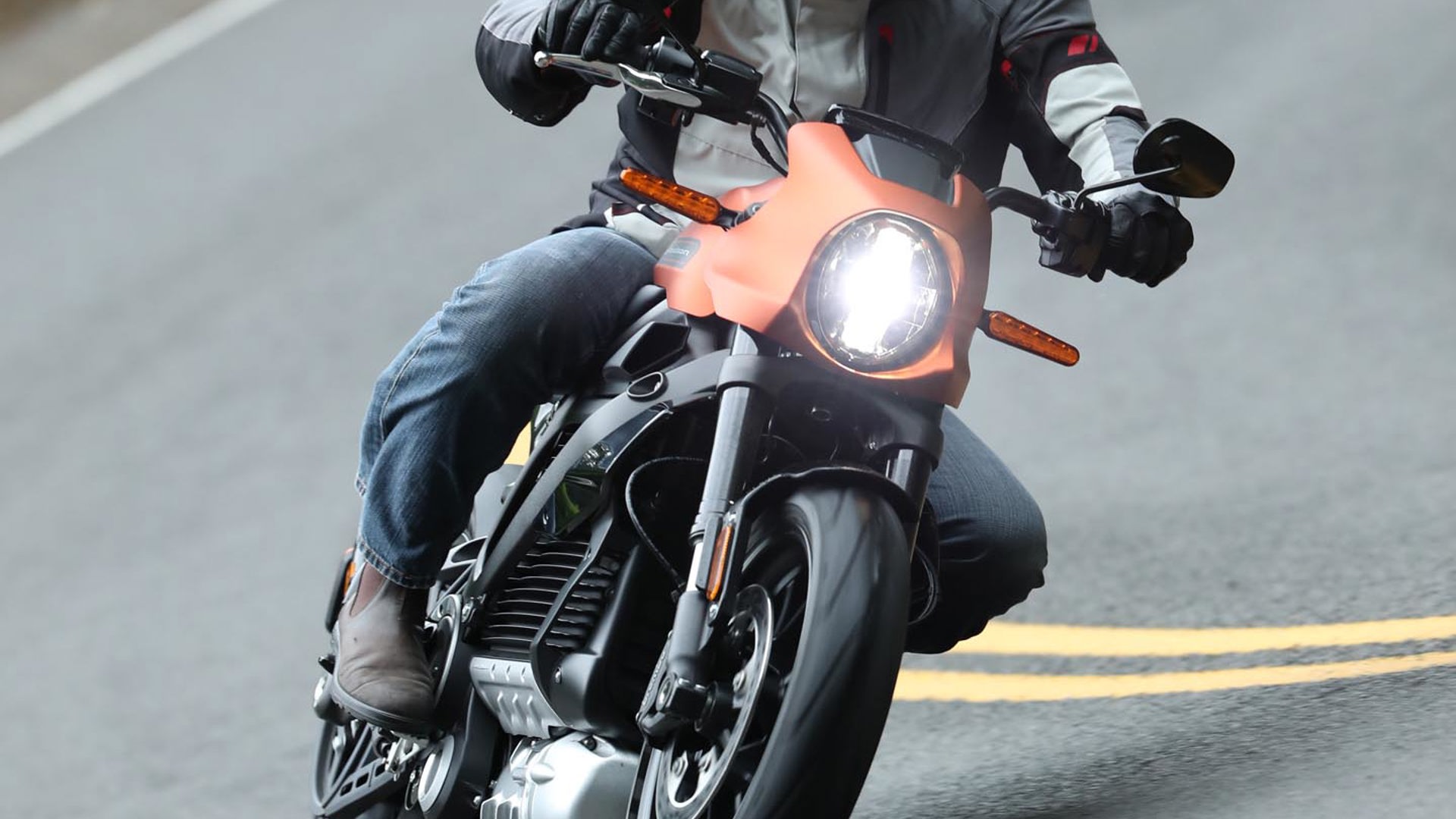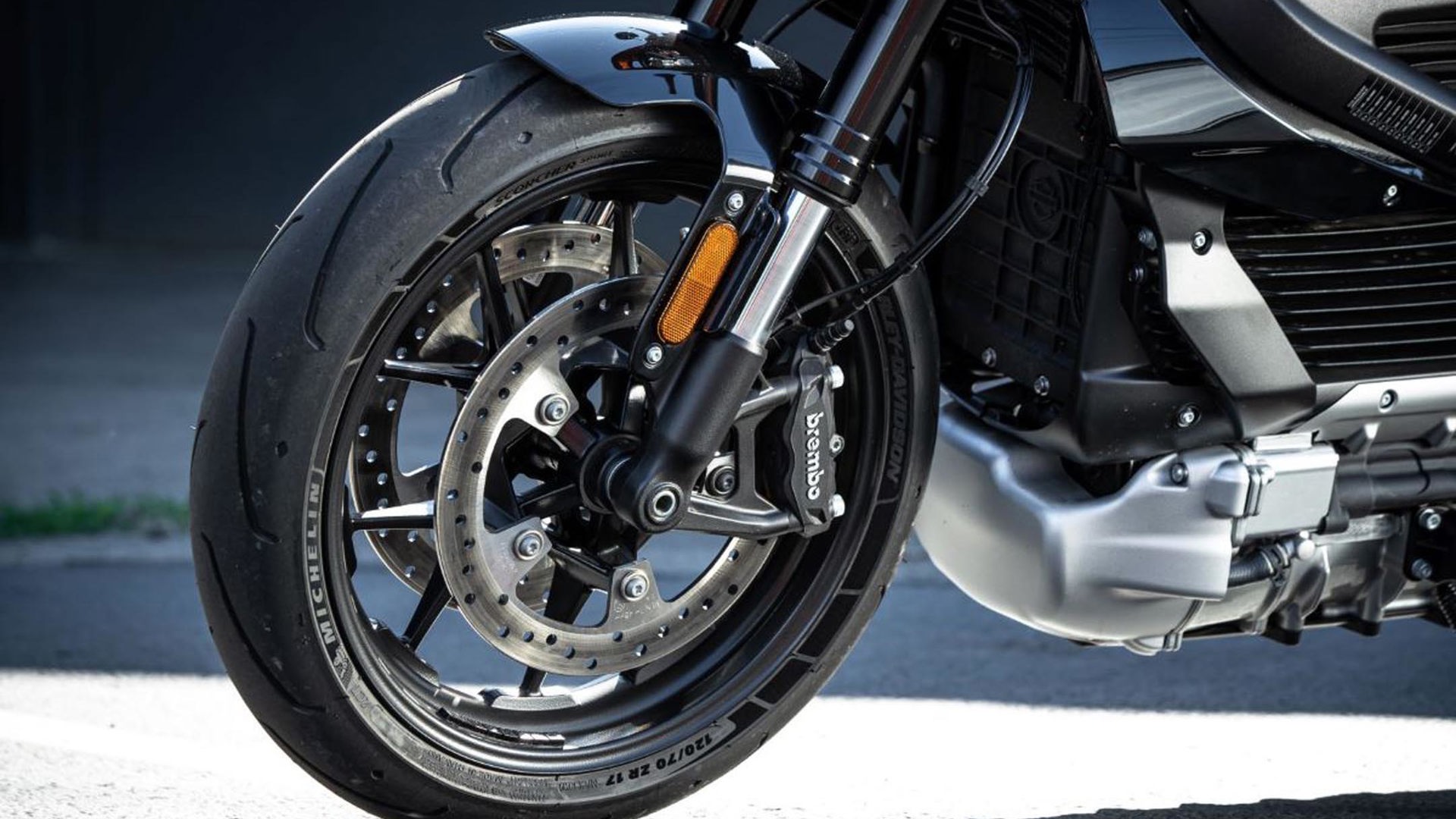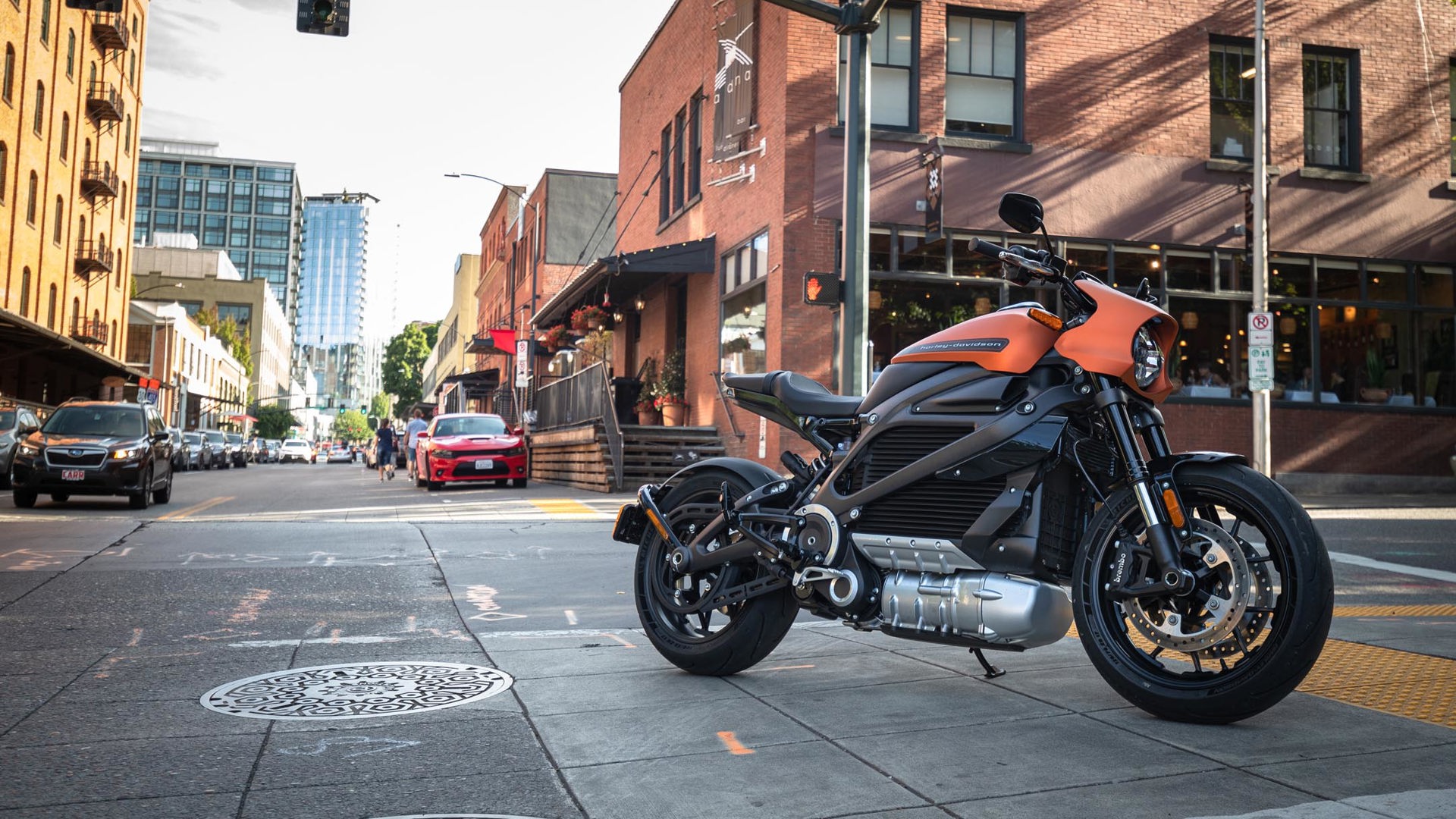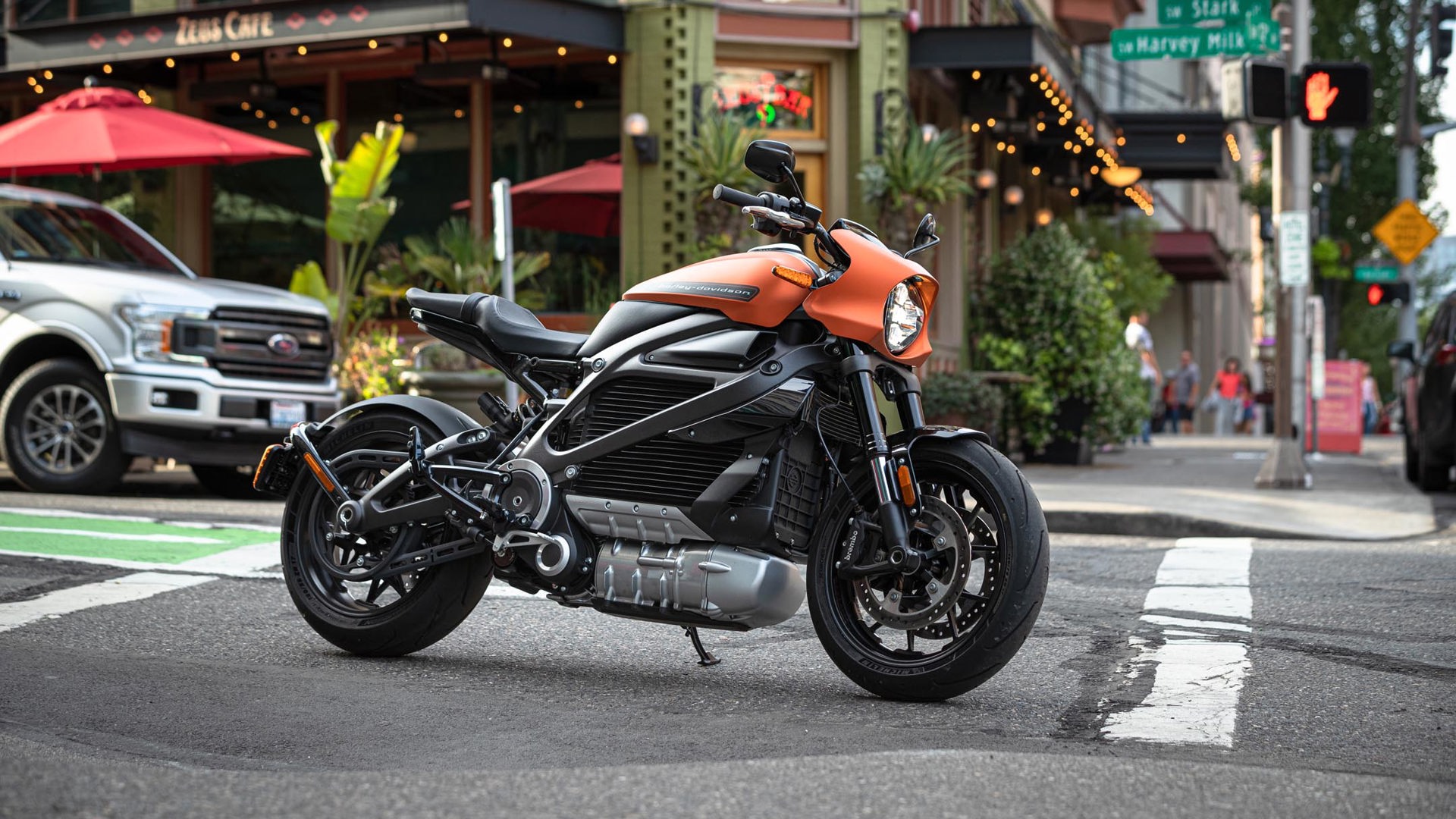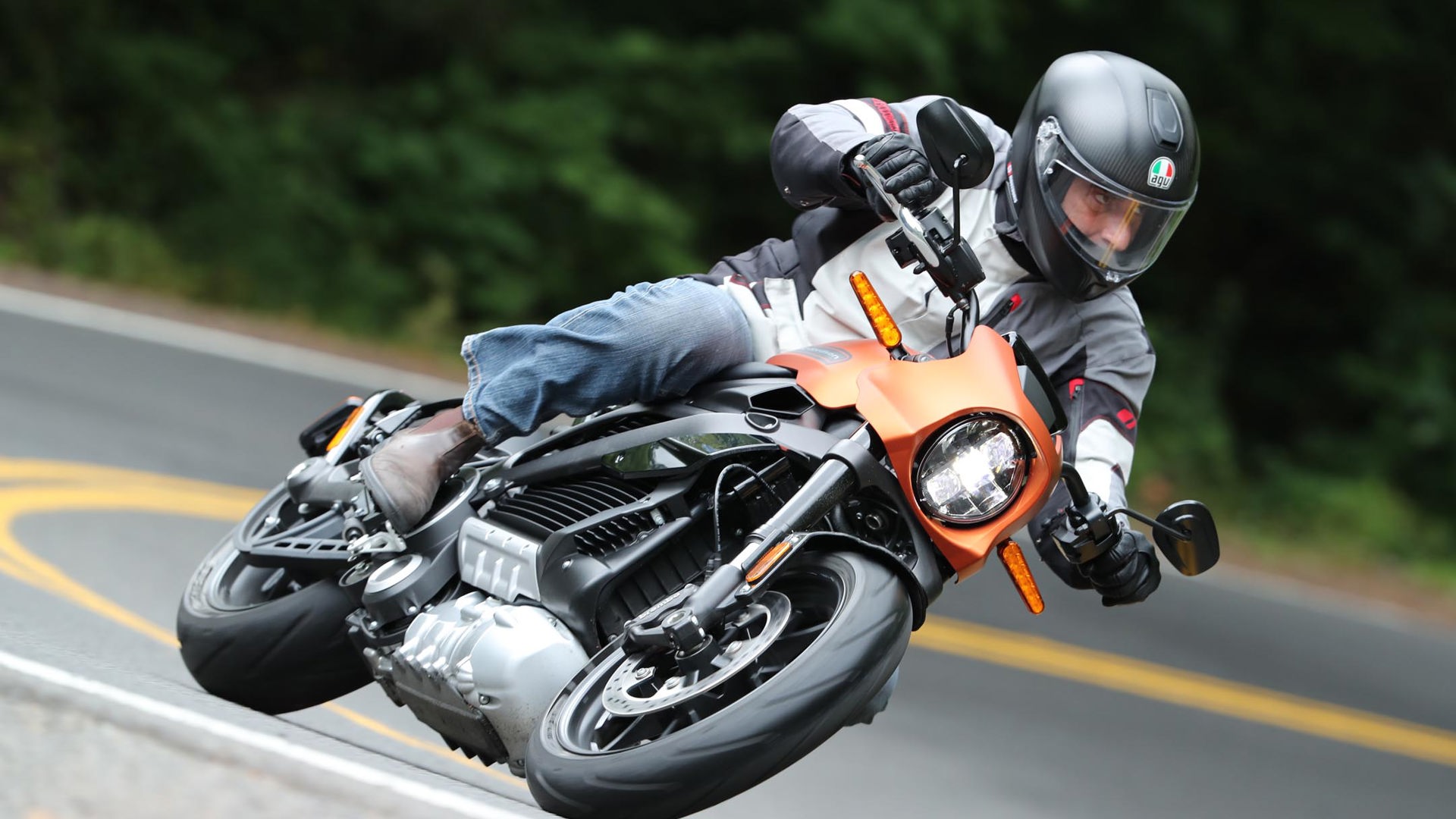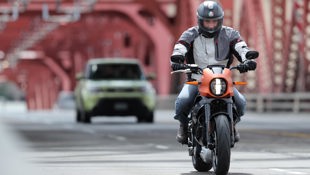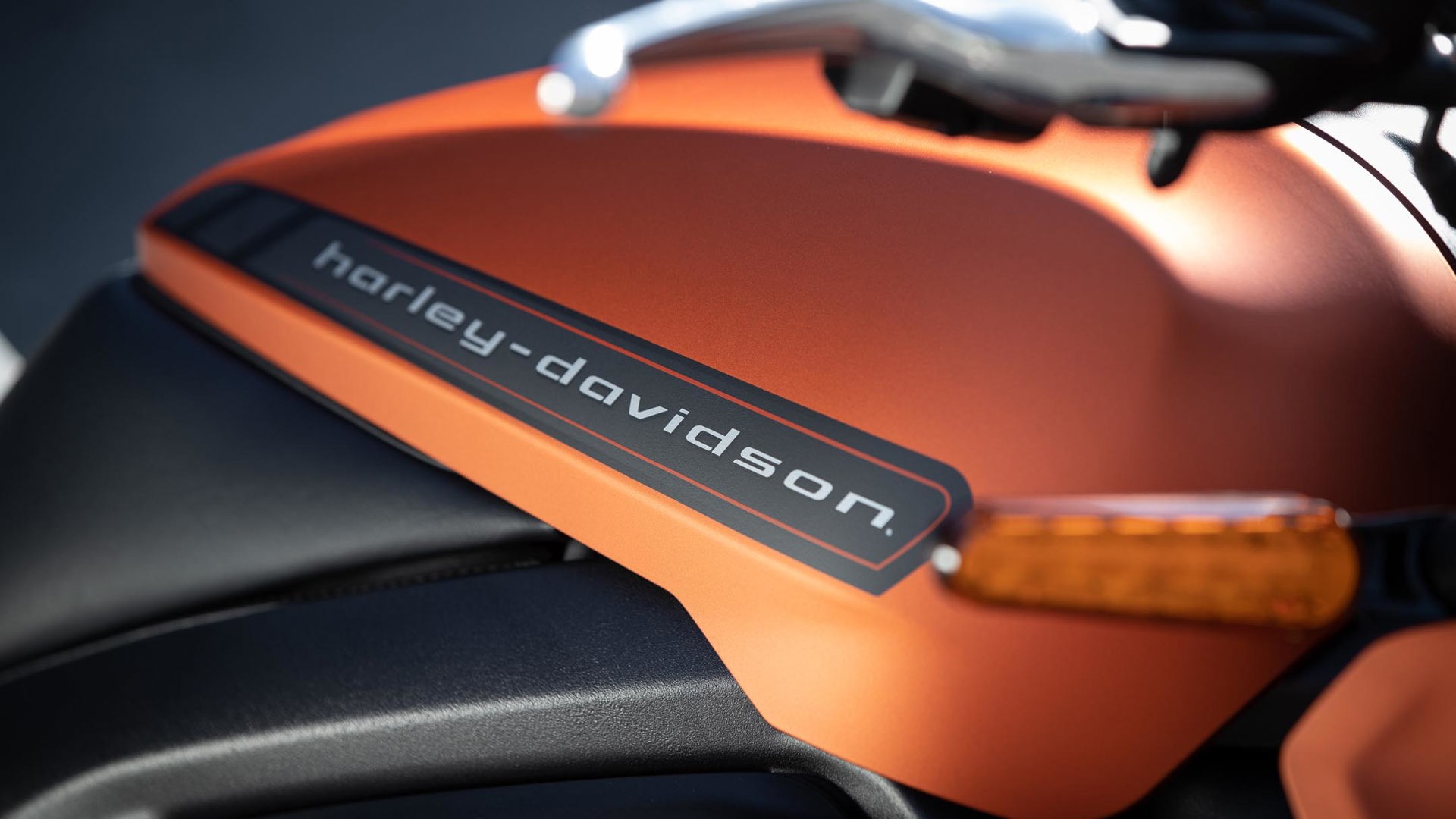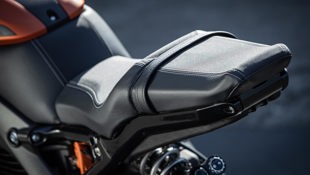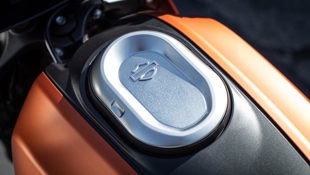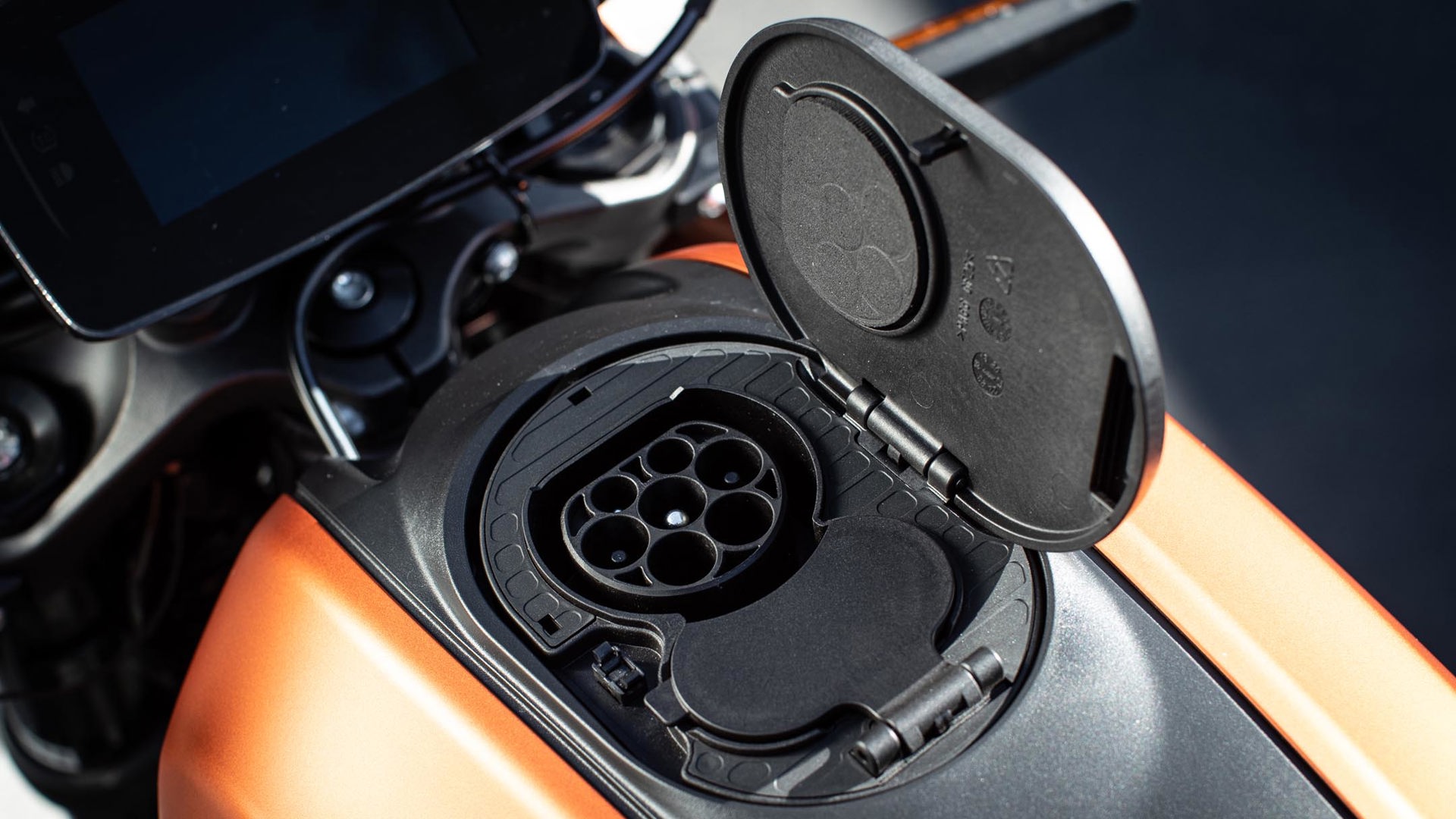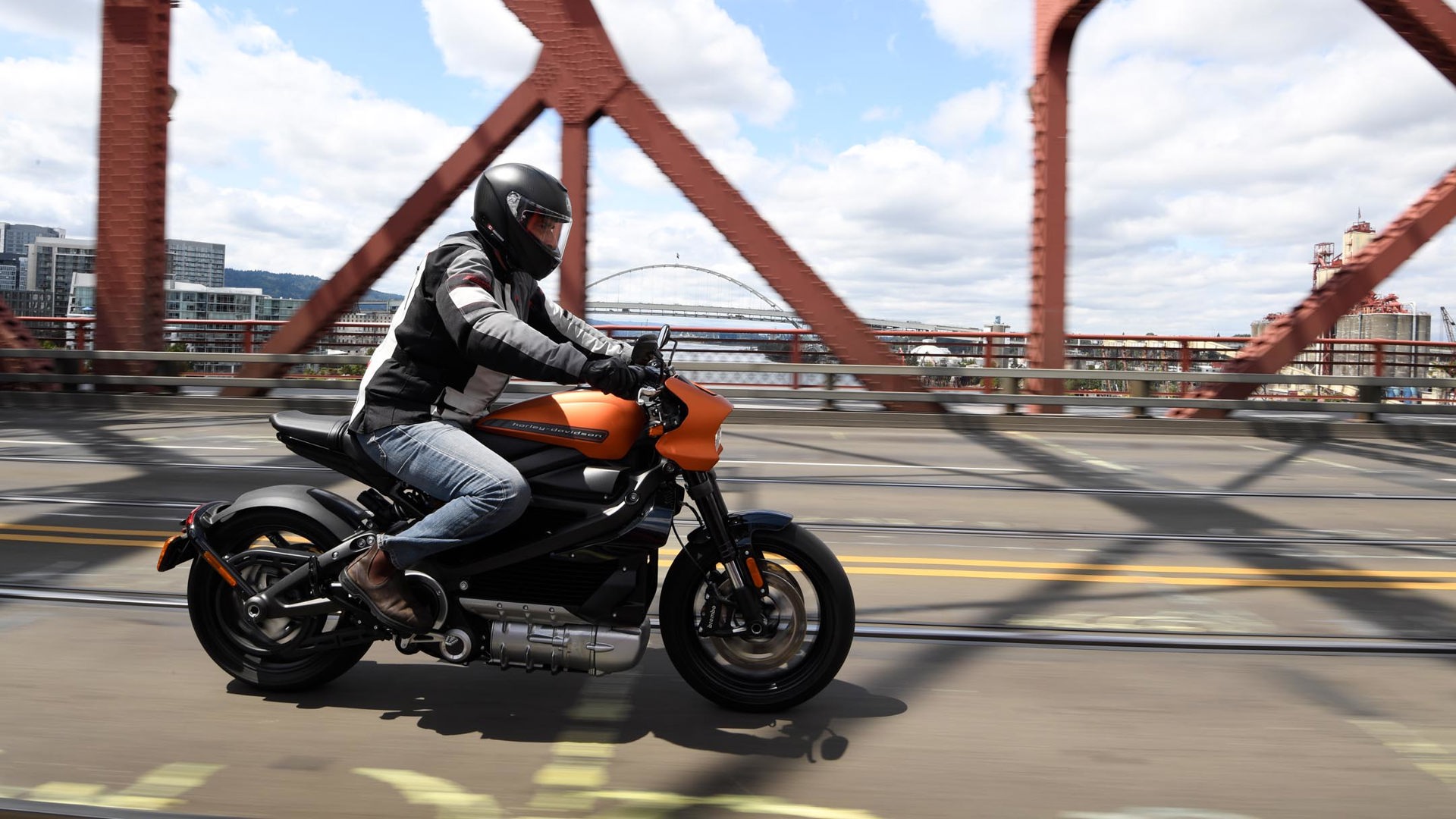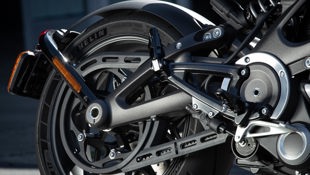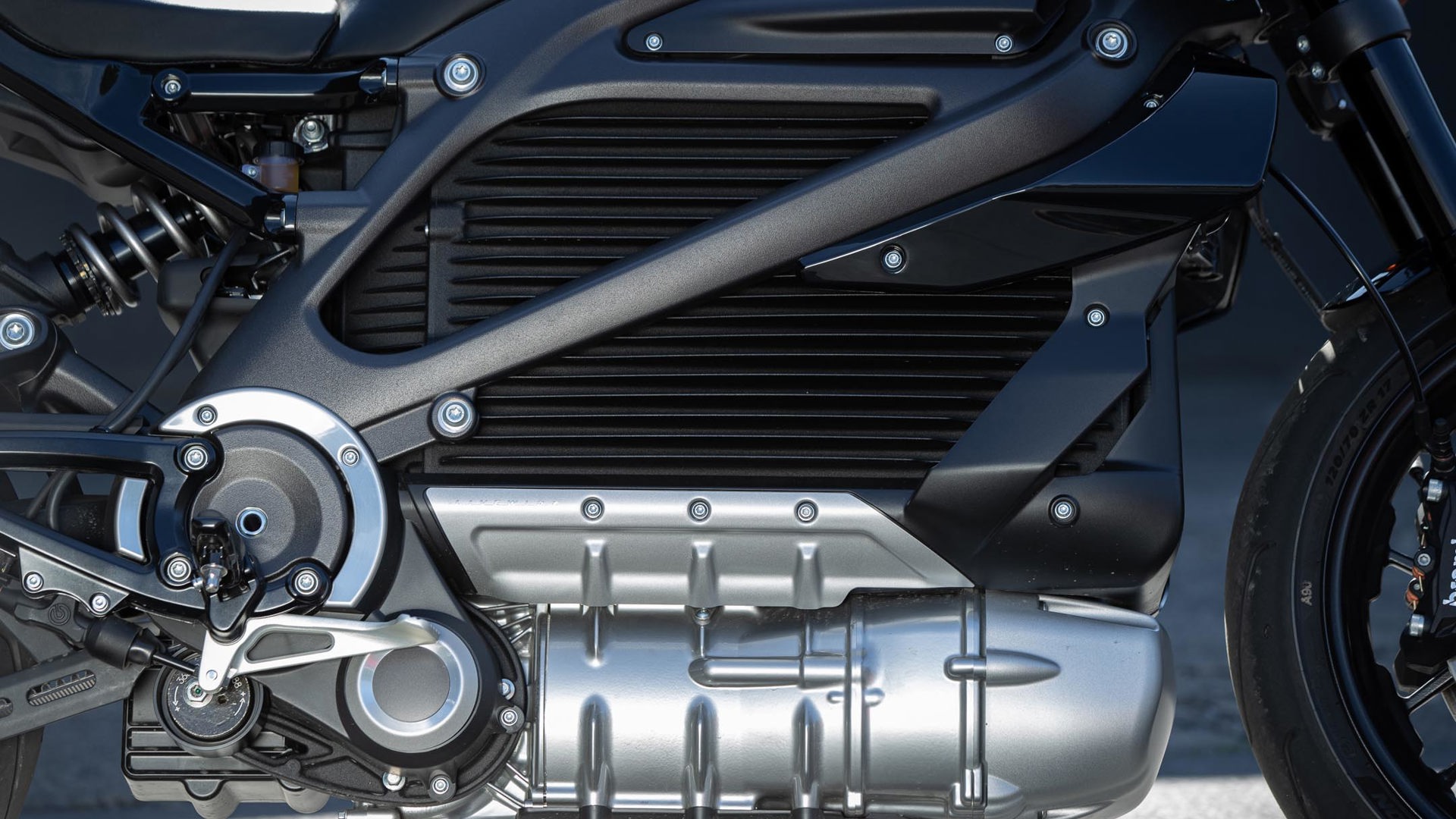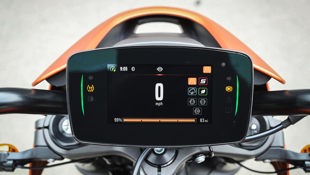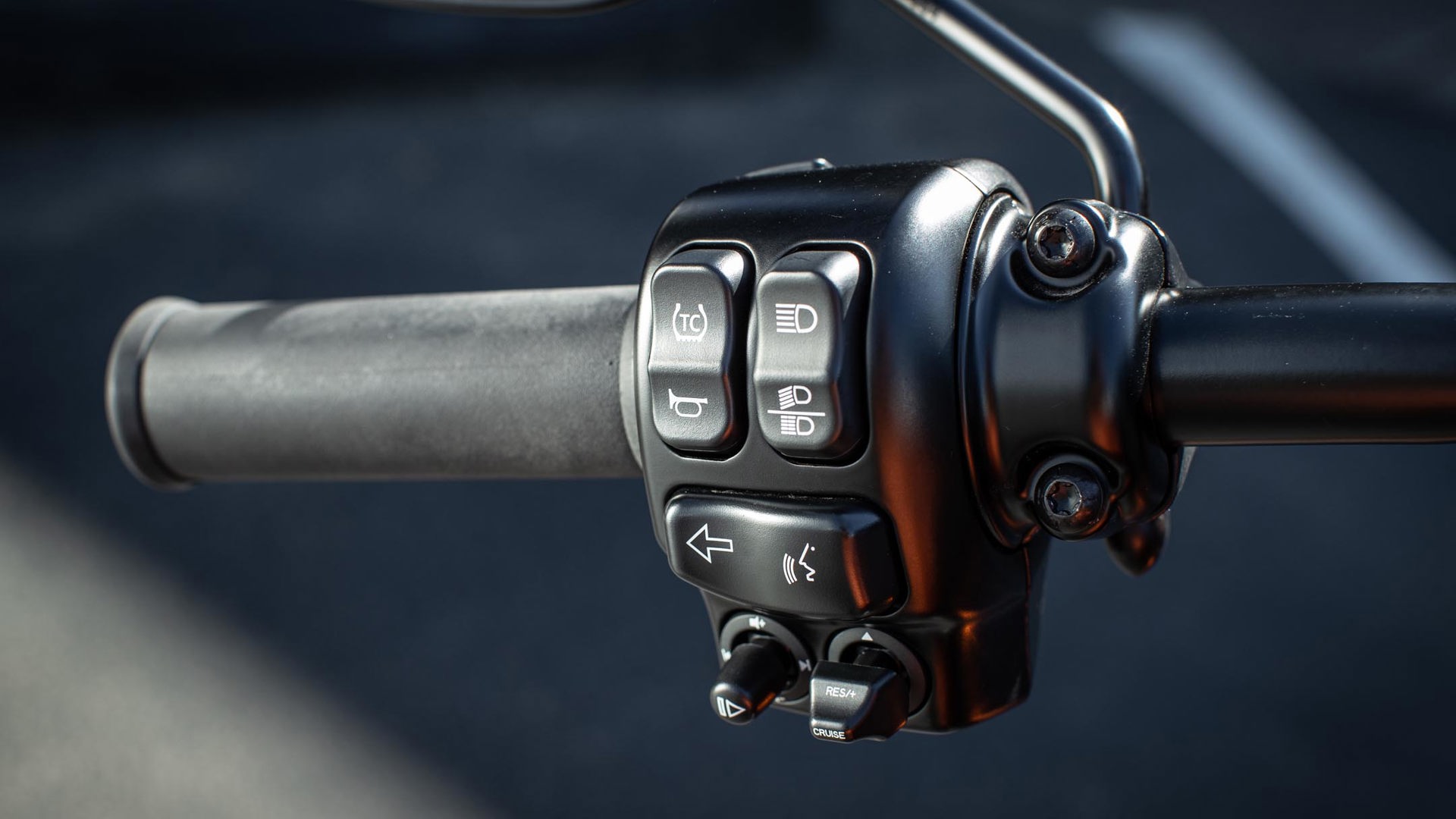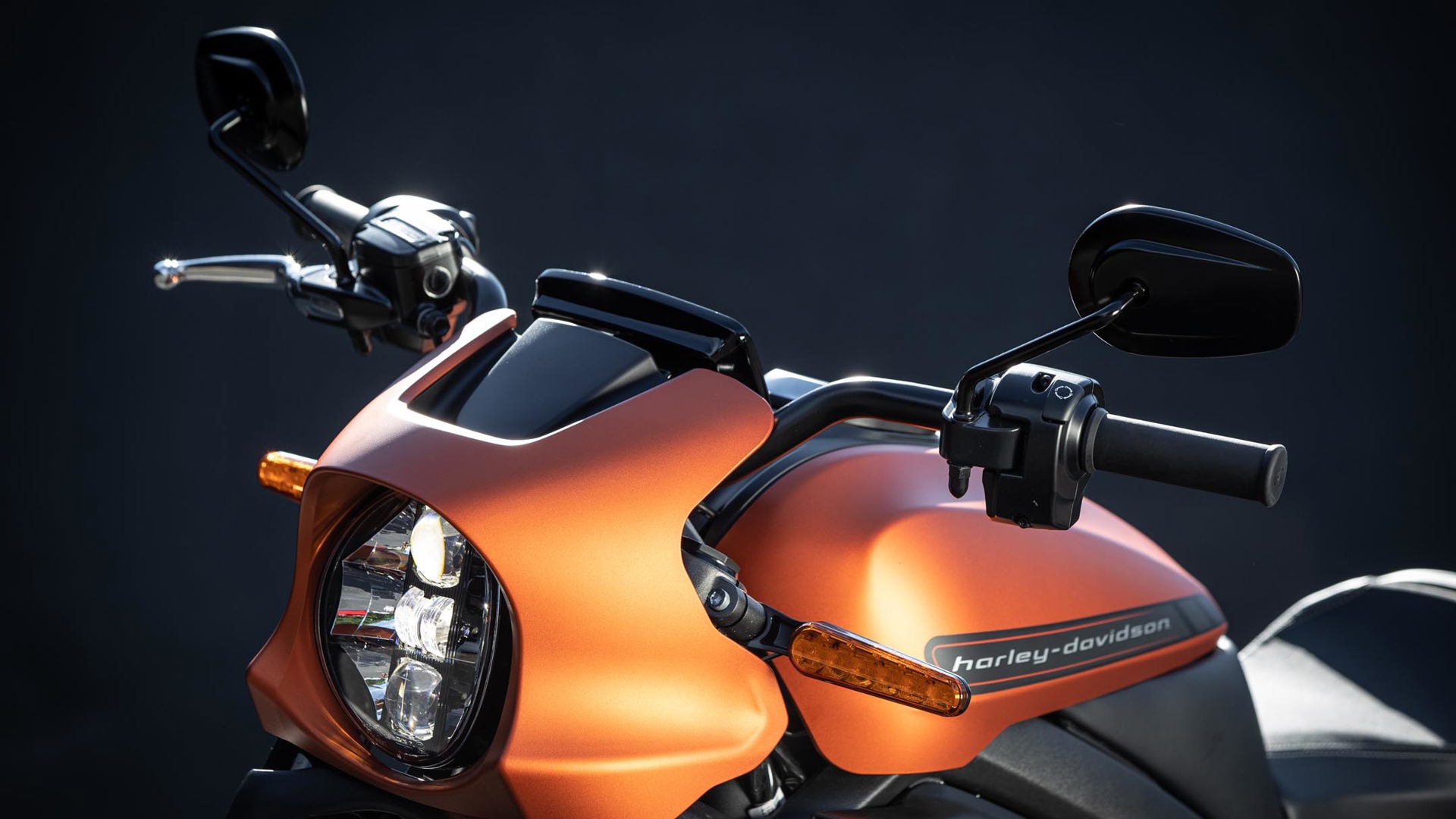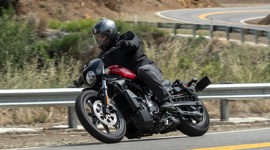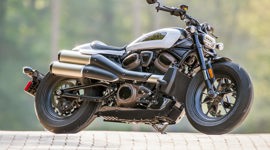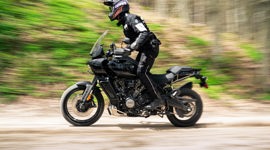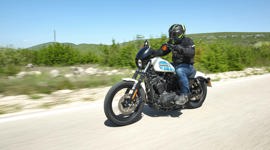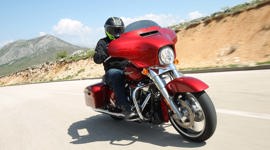PORTLAND, Oregon—The 2020 Harley-Davidson Livewire is probably the most important motorcycle to come out of Milwaukee since the very first bike was built in a shed there in 1903, but the Livewire is actually built in the company’s York, Pennsylvania plant.
I finally got a chance to ride the $37,250 Harley-Davidson Livewire, here at the bike’s international press launch. Harley's been working on the Livewire since 2010, and it will finally hit market this fall. I’ve been anticipating a ride on the company’s first electric bike since I first heard about it back in 2014.
That price is no small chunk of cash. If it puts you off, you can stop reading now. If you’re still here, know that the Livewire is The Motor Company’s halo model: it is a showcase of technology, as well as a hint of what’s in store for the American bike maker’s future. And it doesn’t run on gasoline, which has propelled hogs since Day One.
Harley reps here repeatedly mentioned that the Livewire should not be regarded as a conventional motorcycle. If a long-time rider does so, they’re probably not the right customer for this machine. A potential buyer is no doubt affluent, probably already owns at least one premium motorcycle — not necessarily a Harley — and is looking for something exclusive. And the Livewire is exclusive.
The techie bits
The 78 kW (105 hp) electric motor produces 86 lb-ft. of torque, all the time unless it’s off. Main power comes via a 15.5 kWh lithium-ion battery that is encased in an aluminum box that also contains the battery management electronics. Manufactured by Samsung, the unit is called a Renewable Energy Storage System (RESS), and it also serves as a structural component of the chassis.
The 250-volt RESS can be charged fully overnight using the provided Level 1 charger, which plugs into a standard wall outlet. When on the road, a Level 3 charger can replenish a completely drained battery to 80 percent in 40 minutes, while waiting another 20 minutes brings it to a full charge. A fully charged battery is good for up to 235 km of urban riding. Combined city and highway riding can get up to 152 km from the battery.
Electric vehicles get better city mileage, which is the opposite of gasoline-powered vehicles that do better on the highway. This is because EVs can recuperate energy when slowing down, which you do often in city traffic. The Livewire has regenerative braking, which can be adjusted from practically nothing to a level high enough that you can almost ride without ever touching the brakes. Because the Livewire slows quite hard when the regen is cranked up, the brake light can come on without touching the brakes depending on the g-forces generated when slowing down.
I was skeptical about Harley’s use of only Level 1 and Level 3 charging, since most people who drive electric cars use 240-volt Level 2 chargers at home. These provide a much quicker charge rate than 110-volt Level 1 chargers, and are much more affordable and practical than Level 3 DC quick chargers.
After almost 10 years of Livewire development, though, engineers discovered that for its intended use, Level 1 and Level 3 charging made the most sense. They figured that the Livewire’s range is good enough for mostly daily rides within a certain proximity to home.
After an overnight charge it’s good to go for another day. If a top-up is needed during the day, a Level 3 charge is much quicker and more convenient than a Level 1 or 2 charge, since enough energy can be restored during a coffee or lunch break to continue on the ride. And although you can plug the Livewire into a Level 2 charger, it can only provide a charge at the same rate as the Level 1 charger, since that’s the way the bike is configured.
The Livewire has lean-sensitive ABS and traction control, as well as rear-wheel-lift mitigation, which keeps the rear tire from lifting under heavy braking. It also has drag-torque slip control, which is the equivalent of a slipper clutch, preventing the rear wheel from hopping when braking hard with the regenerative braking dialed up.
There are seven ride modes: four of them are factory preset — Sport, Road, Rain and Range — and three of them are programmable. The preset modes adjust throttle response, traction control and other parameters just like on a conventional bike; Range mode is designed to extend range by softening throttle response and kicking up the regen braking.
Another bit of high-techery is H-D Connect, which connects the bike to a cellular network, and the H-D App. This connectivity allows an owner to monitor the bike’s status on a smart phone: it provides alerts if the bike is being tampered with, it gives service alerts (though those will be quite infrequent since there’s not much that needs tending), it locates charging stations and displays them on your phone’s screen, and through your smart phone, it displays turn-by-turn directions on the bike's display screen.
Riding the Livewire
There’s a small adaptation to make when riding an electric motorcycle. The Livewire turns on via the kill switch, and it actually has a start button that turns on the electric motor before you can ride away. It’s easier to ride than a conventional motorcycle, since the lack of a gearbox provides a twist-and-go riding experience, but its high torque doesn’t mean this is a beginner bike. You can, however, adjust it to ride like one in the custom modes.
There’s no engine noise, though the Livewire isn’t completely silent. It produces a slight gear whine when accelerating, which is actually tuned into the reduction gear within the motor. Another slightly odd characteristic engineers have tuned into the Livewire is the “pulse” it produces through the handlebars at a stop. The electric motor produces a cyclic pulse that gives the Livewire a heartbeat-like sensation at a stop; it’s very subtle, but it’s there to let you know it’s running.
The Livewire feels heavy when lifted off the side stand, since a 100 kg chunk of its 250 kg weight is contained in the centrally located RESS. The gauges are displayed within a 4.3-inch TFT screen that has a multitude of functions, and it pivots on its mount to adjust for riders of different heights. The riding position is almost naked bike-like but with a slightly forward lean to the low handlebar — it actually feels similar to a Ducati Monster from the saddle, at least at standstill.
Twist the right grip and you get a seamless rush of acceleration that doesn’t really stop until upwards of 160 km/h. Rolling on the throttle is among the Livewire’s most redeeming features, providing a forceful forward rush that is free of gear changes. Adding to the bike’s tempting twist-me throttle is a mostly silent operation that stealthily facilitates delinquent behaviour. Claimed top speed is 177 km/h, which the Livewire seems quite capable of attaining.
Steering is light, and while the Livewire turns in with relative ease, it requires some effort at the handlebar to maintain a lean or tighten up mid corner — almost as if it were rolling on an excessively wide rear tire. It's fitted with supersport-sized 17-inch wheels, with a 120/70 tire up front and a 180/55 in the rear. The fully adjustable Showa suspension could have easily come off a supersport machine; it was set up too firm for me, and I would have set it softer if a screwdriver had been readily available.
We rode for 100 km, within Portland and its surrounding winding roads, which dropped battery level to 34 percent, or good for about another 50 km. This is right on Harley’s claim. I did nothing to try to conserve energy, and was actually quite hard on the throttle.
For what it’s worth
There’s no doubt that all of the work and development that's gone into the Livewire has produced a refined machine that doesn’t lack much for a first attempt. Its performance is on par with at least a middleweight four-cylinder sport bike or bigger sporty twin. Its range and charging rate are reasonable enough that you can ride with your buddies on conventional machines, as long as they don’t mind waiting while you charge back up.
One thing I can’t justify is the price; it is, after all, the most expensive non-CVO model in Harley’s lineup. I don’t have a new Jag and a boat and an RV in the garage, nor do I pull in a healthy six figures, so maybe that’s why I can’t understand it. But to early-adopter types, who crave the latest tech and a touch of exclusivity, price is probably no object.
It’s too bad it is out of my price range — by a lot — because aside from its exclusive pricing, the Livewire makes sense, even among regular internal-combustion motorcycles. I wouldn’t hesitate to take it out for a weekend romp with my riding buddies, and I wouldn’t be preoccupied with range anxiety. My latest rides on my own bike covered about 200 km, which is easily achievable on the Livewire if a Level 3 charging station is halfway around. Of course, I live in Quebec, which is much better serviced for charging stations than most of Canada. For personal daily use, the way I ride, I could operate the Livewire and I wouldn’t miss gas stations one bit.
Hopefully, Harley has some future Livewire models in the pipeline that will be more affordable. As long as they maintain about the same range and similar performance, I could see one joining the other bikes in my garage.
